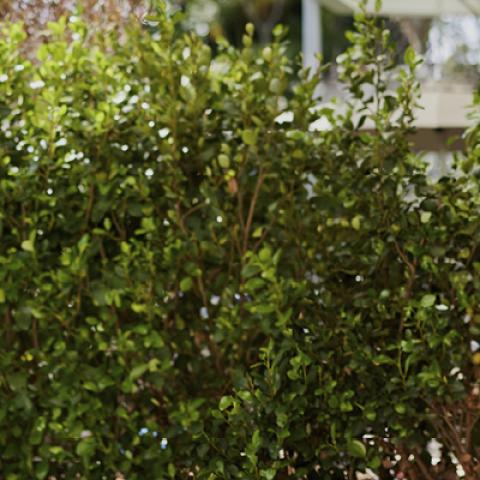As the third quarter of 2022 comes to an end, retailers are getting ready for November’s big sales events and the peak sales season that takes us through to the end of the year. The last quarter of 2021 made up 33% of the year’s total online spend. What happens in Q4 will likely determine just how successful 2022 will be for most online retailers.
To support retailers succeed this upcoming peak shopping season, we look at three areas that will help them with their thinking and planning. We start by summarising last year’s numbers and highlighting the key trends and learnings. It’s a very different sales environment out there this year, compared to last year, and we discuss the challenges and expectations this brings for 2022’s sales events.
1. 2021 Sales Numbers – Q4 and Sales Events
Kiwis spent over $2.5 billion online on physical goods between October and December 2021 (Q4 2021), the highest quarterly spend we’ve seen online since we started monitoring the markets. This was 45% up on Q4 2020 and a huge 71% up on the last quarter of 2019.
During Q4 2021, COVID restrictions were in place that saw extended lockdowns in some parts of the country, including Auckland. With spending at physical stores restricted, inflation at lower than current levels, and reduced competition from spend on travel, conditions were more favourable for online retail spending. And Kiwis embraced the conditions, completing over 22.5 million online transactions during the quarter - a staggering 245,000 transactions per day on average. That’s 7 million (47%) more transactions than Q4 2020 and 61% up on ‘pre-COVID’ Q4 2019.
It’s not surprising that, with already-elevated level of online spending due to lockdowns, sales events in November 2021 also reached new highs.
$30.8mSingles' Day | $101.3mClick Frenzy | $141.3mBlack Friday/ Cyber Monday Weekend |
In the four days of Black Friday/Cyber Monday weekend, shoppers completed over 1.1 million transactions, resulting in a massive online spend of $141.3 million. This was up 23% compared to the same four days in 2020 and 60% up on 2019.
Adding to the success of event days, 2021 saw Click Frenzy open to Kiwi shoppers for the first time. This three day online only event kicked off in prime time on a Tuesday (9/11) and competed directly with Singles’ Day (11/11) promotions. It offered shoppers heavily discounted prices on hundreds of local and global brands, across many sectors. The result was over $101 million spent by Kiwis in the 53-hours of the event.
2. Key learnings from 2021 Sales Events
A longer promotional period – Over recent years we’ve seen retailers start their event day promotions earlier and earlier. This was particularly noticeable in 2021, with many businesses starting their Black Friday promotion two weeks before the big day to achieve cut-through. Some businesses even went as far as offering deals across the whole month. As a result, there were 7.8 million online transactions in November 2021 which led to a total online spending of $893 million for the month – up 40% on November 2020.
More than one day events – When sales days first started to grow in popularity, we’d see a frenzy of sales activity on the event day. In 2021, we saw bigger sales days on either side of some event days. Singles' Day, for example, peaked the day before the big day (helped by Click Frenzy), and Black Friday spending peaked on the Wednesday before Black Friday, leading to the phrase ‘Black Week’ being coined. Online retailers now need to gear up to handle increased volumes for longer periods – not just one day.
Sales events are multi-sector – Sales events used to be mostly about spend on big ticket items like furniture, homewares and electronic goods. We’ve seen this trend changing in recent years, with ‘everyday spending’ leading the way in 2021. The Clothing & Footwear sector experienced the strongest growth in online spending in November 2021, up 60% on November 2020 and double November 2019. Department, Variety & Misc. Retail was the next fastest growing sector, up 42% on November 2020. Even the slowest growing sector (Health & Beauty) saw its spending numbers up 25% on the year before.
All Kiwis love Sales Events – While the 35-60 age group leads New Zealand’s online spending, Kiwis of all ages, right around the country, are embracing event days. November 2021 saw spending growth across all age groups, with the 20-30 and the over 70 age groups showing the highest rates of growth. Spending by females also grew by 51%, outstripping online spend by males. Nearly all regions saw annual growth of over 20% for November 2021, led by locked-down regions - Auckland (58%), Northland (38%) and Waikato (34%) – and Gisborne (39%) and Bay of Plenty (33%).

3. 2022 will be different again
Last year’s Q4 peak season was unique as lockdowns and safety concerns encouraged shoppers online. The wider economic environment was also significantly different, with greater consumer confidence and less competition for shoppers' discretionary spend from travel and accommodation. The result was record breaking numbers.
The lasting impact of last year’s sales highs is that it attracted many new people to online shopping and created new shopping habits that have continued through 2022. Many of those who saw the value, and enjoyed the thrill, of sales events in 2021 will no doubt be back in 2022.
Throughout 2022, we’ve seen online spending and transactions decline as shoppers have felt the impacts of record-high inflation. While down on 2021 levels, 2022’s spending and transaction levels remain well above 2019’s pre-pandemic levels, and this is expected to continue in Q4, despite economic concerns and borders re-opening and attracting increased travel spend.
With an easing of restrictions and hopefully no further lockdowns in place this year, online retailers will be competing with bricks and mortar retailers on level terms for sales event spend. Last quarter we saw online spending fall in line with instore spending, further suggesting online retailers won’t enjoy the same advantages they did in recent years. This could influence how online retailers promote products, requiring them to once again highlight the ease and convenience benefits of buying online.
Another trend emerging in recent months has seen shoppers prioritise spending on essential items over non-essential. This is largely due to their declining purchasing power, driven by high inflation and wages not keeping up. Essential items like clothing and shoes, at sale prices, will no doubt attract those shoppers who are prioritising low cost spend. However, the real opportunity for sales events in 2022 may be for shoppers to treat themselves (or as gifts for others) while prices are discounted. We could also see shoppers, who wouldn’t normally participate in sales events, taking advantage of the discounts. In developing their sales strategies, retailers need to pay particular attention to a mix of products for shoppers who are more selective with their spending.
We also expect to see the trend continue that sales events are lasting longer, turning into sales weeks or months. And with such a strong introduction, we expect to see Click Frenzy 2022 build on the Kiwi following it established last year. Many retailers and shoppers weren’t aware of it last year but awareness and participation, from both sides, is expected to increase this year.
And of course, supply chain issues were a big factor in peak season over the last two years and are expected to be again this year. While many are seeing some easing of supply challenges, these are being replaced by staff shortages. This time around consumers will be less surprised by disruption, and are therefore more receptive to retailers being open about the challenges and their impact.
In summary, while the environment is different and undoubtably tougher than last year, we expect Q4 will be a strong quarter – well above pre-COVID days - providing retailers with many opportunities to drive further growth from both existing and new customers. See our top tips for sales events article for advice for this busy period.






